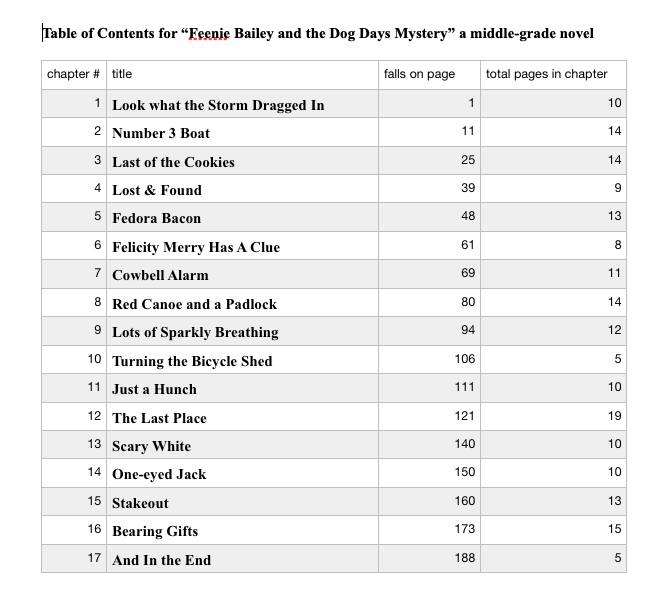Member-only story
Using Your Table of Contents for Structure and Pacing in Your Novel
A post first draft check-in point
Setting the table
A table of contents isn’t just about organizing your chapters; it’s also a valuable tool for shaping your novel’s content. Here’s how to use it to its fullest potential.
A table of contents is an odd little thing: usually forgotten in the heat of creating a first draft, but so useful to focus, shape, and pace later drafts. At some point during the second draft — possibly a “blocked” day, when a manuscript’s progression stalls — it’s useful to set up your novel’s table, to work through chapter titles and lengths and gain the sense of through-line that comes with this knowledge. Here’s an example of a working table of contents from a novel I’ve written.

Titling chapters
First things first. Name the chapters in your draft. When it comes to titling chapters, the idea is to come up with something. This is a working table of contents (TOC), which means there’s plenty of room for you to play. Some titles may come easily, and some will be a struggle. Think in terms of focus if you’re struggling. What is the chapter about? What happens in this section? The answer to this question will give the chapter a sense of urgency and, as a result, movement. It’ll also point out segments in need of revision!
If you are unable to articulate what happens in a given chapter, it’s probably a sign that this section has not yet found its shape — or beginning, middle, and end. Once you’ve pinpointed the focus, then you may pencil in a short descriptor of the action that occurs or opt for something more whimsical. Look through the above example titles to see how they have a sense of “opener” (Look What the Storm Dragged In), “closer” (And In the End), a certain coyness or “messing-with-you,” (Lots of Sparkly Breathing), something that might elicit a question (Fedora Bacon).
Ideally you want a good variety and for them to have a rhythm all their own but analogous to the rhythm of the novel story, too.
